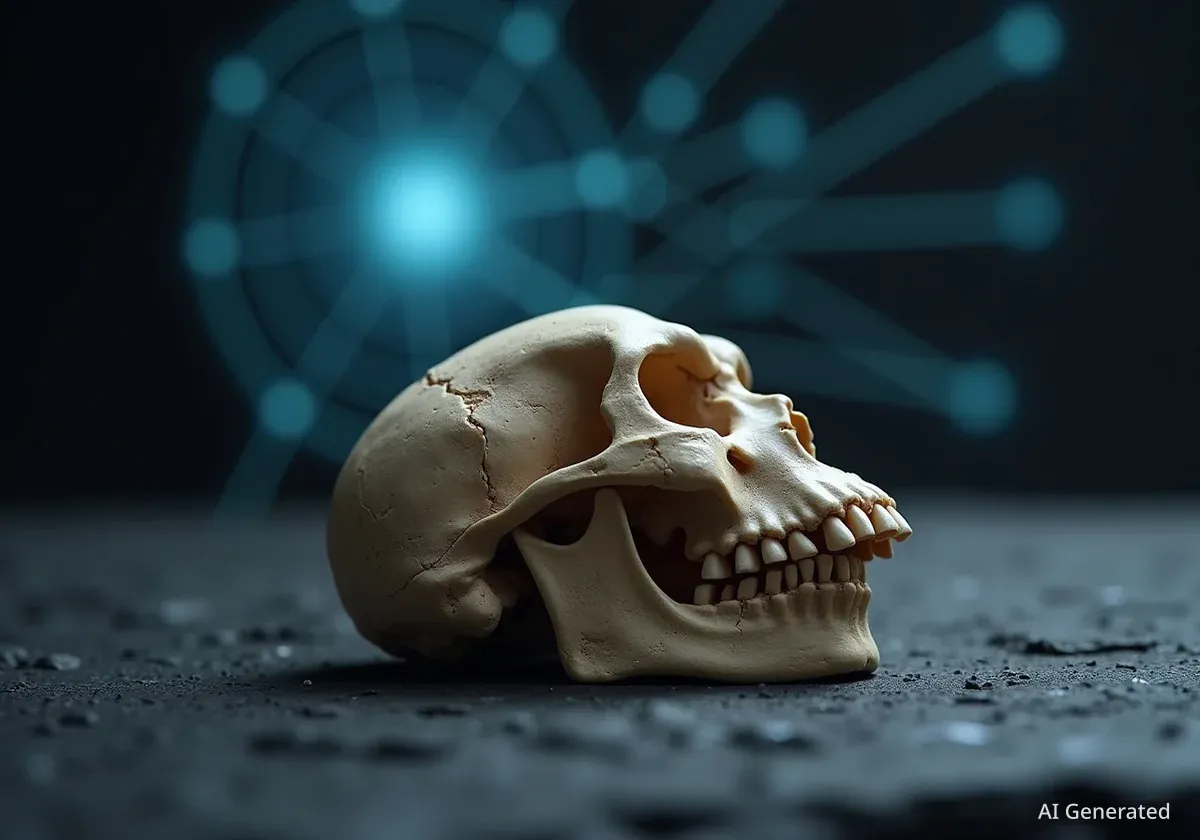A new study has used artificial intelligence to analyze fossil remains, providing strong evidence that leopards hunted and consumed early human ancestors nearly two million years ago in East Africa. The research focused on two specimens of Homo habilis, identifying the ancient predators with a high degree of confidence.
The findings, published in the journal Annals of the New York Academy of Sciences, offer a detailed look into the dangers faced by one of the earliest members of the Homo genus and showcase how advanced technology can solve long-standing paleontological questions.
Key Takeaways
- Artificial intelligence was used to analyze 1.8-million-year-old Homo habilis fossils.
- The AI model identified tooth marks on the fossils as belonging to leopards with over 90% accuracy.
- The study examined two key specimens, an adult (OH 65) and a juvenile (OH 7), from Olduvai Gorge, Tanzania.
- Evidence suggests the individuals were fully consumed by the leopards, not just attacked.
AI Solves an Ancient Predation Mystery
For decades, scientists have known that early hominins were likely prey for large carnivores. Evidence such as tooth marks on ancient bones has pointed to this conclusion, but identifying the specific predator has often been a challenge using traditional methods of physical examination alone.
This new research overcomes that hurdle by employing sophisticated AI tools. A team of researchers analyzed two significant Homo habilis fossils discovered in Tanzania's Olduvai Gorge. These specimens, dated to approximately 1.8 million and 1.85 million years ago, showed previously undocumented tooth marks.
By applying a specially trained AI system, the team was able to attribute these marks to leopards. This provides one of the most definitive links between a specific predator and an early human ancestor, clarifying the dynamics of the prehistoric ecosystem.
"AI has opened new doors of understanding," stated Manuel Domínguez-Rodrigo, a study co-author and professor at the University of Alcalá. The technology allowed the team to document the predator with "unprecedented reliability."
The Technology Behind the Finding
The core of the study involved training deep learning models, a subset of AI, to recognize patterns in bone markings. Researchers used computer vision, an AI field that enables computers to interpret and understand visual information from the world.
Training the AI Model
To ensure accuracy, the scientists fed the AI hundreds of examples of bone markings made by modern carnivores. The training data included marks from hyenas, crocodiles, and leopards, allowing the system to learn the unique signature of each animal's bite.
This extensive training process was crucial. According to Domínguez-Rodrigo, the best-performing model demonstrated remarkable precision in blind tests, correctly identifying the animal responsible for the marks more than 90% of the time.
High-Confidence Identification
When the validated AI system analyzed the tooth marks on the Homo habilis jawbones, it identified leopards as the culprits with a high degree of statistical confidence. This moves the conclusion from educated speculation to a data-supported finding.
Examining the Fossil Evidence
The study focused on two of the most well-preserved Homo habilis specimens available. One was a juvenile known as OH 7, and the other was an adult, OH 65. Both were unearthed decades ago in Olduvai Gorge, a site rich with hominin fossils.
During a preliminary examination, the research team identified carnivore tooth marks that had not been previously documented. These marks were located on the upper jaw of the adult specimen and the lower jaw of the juvenile.
The presence of these marks prompted the deeper AI analysis. The choice of these specific fossils was strategic. "We chose those two fossils because they are most unambiguously identified as H. habilis and because they are probably the best preserved specimens," Domínguez-Rodrigo explained to Live Science.
Who Was Homo habilis?
Homo habilis, meaning "handy man," is one of the earliest known species of the genus Homo. They lived in eastern and southern Africa between about 2.4 million and 1.4 million years ago. While they were tool-makers, they occupied a precarious position in the food chain, serving as both hunters and hunted.
Evidence Points to Consumption, Not Just an Attack
The study goes beyond simply identifying the predator; it also provides strong evidence that the two Homo habilis individuals were eaten by the leopards. The researchers' conclusion is based on the nature and location of the bite marks and the condition of the skeletal remains.
One key piece of evidence is the extensive damage. "The fact that very few pieces of the skeleton survived indicates a high degree of ravaging," said Domínguez-Rodrigo. This suggests a thorough consumption of the carcass.
Location of Bite Marks is Key
The placement of the tooth marks provides further support. To leave marks on the inside of the lower jaw (mandible) of the juvenile specimen, a significant amount of flesh and the tongue would have had to be removed first.
"This indicates consumption and not just a bite to kill," Domínguez-Rodrigo noted. Furthermore, leopards are known to be primarily flesh-eaters. If another scavenger had reached the carcass first, it is unlikely a leopard would have shown interest, as little flesh would have remained.
This detailed analysis helps paint a vivid picture of the survival challenges faced by our ancient relatives. While they were developing the skills and tools that would eventually place humans at the top of the food chain, they were still very much a part of it, living in constant danger from formidable predators like leopards.





